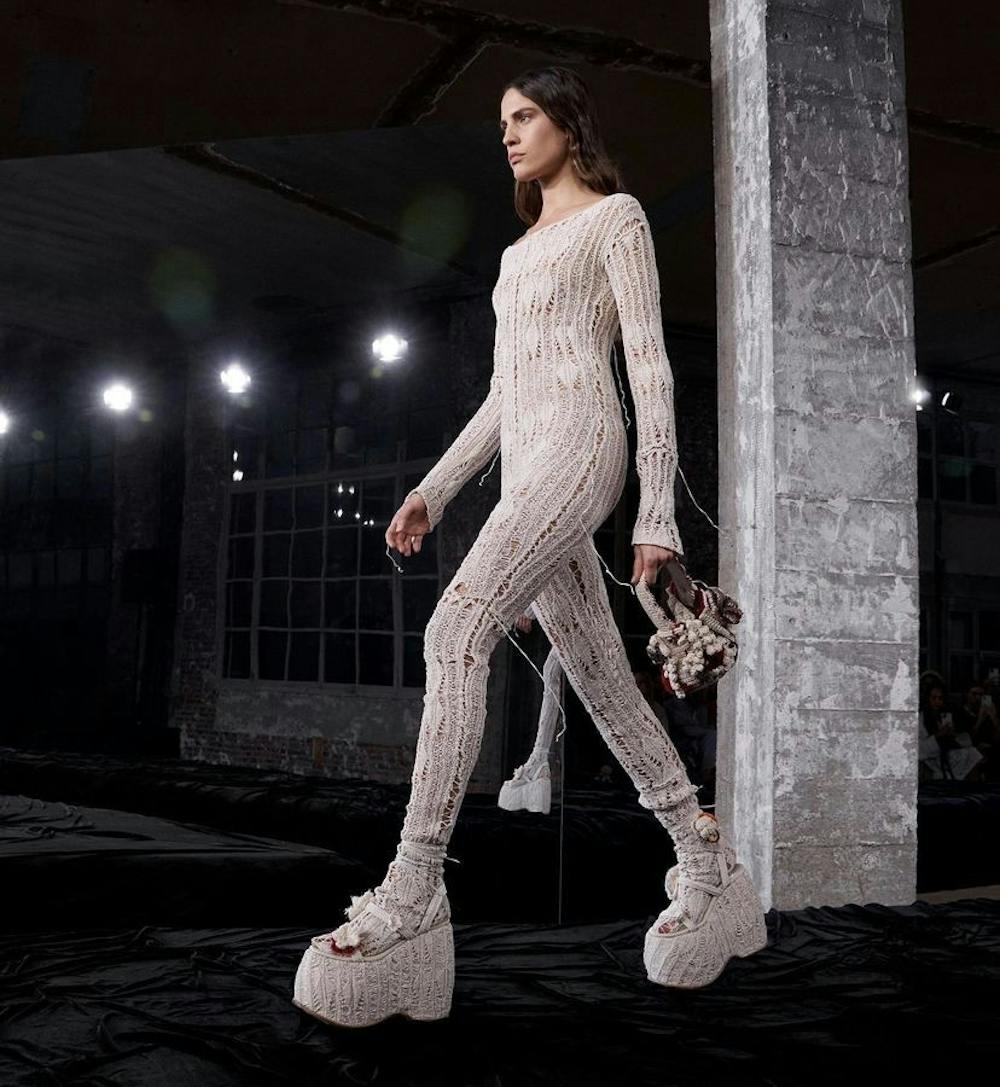It is no surprise that high fashion brand Acne Studios made a comeback to the fashion scene.
The Swedish brand returned last week to Paris Fashion Week to host its first runway show since the onset of the COVID-19 pandemic. Acne studios debuted a fall-esque collection, filled with see through fabrics, deconstructed silhouettes, and bright colors.
Acne Studios founder and designer Johnny Johansson decided to take a new approach with his looks this season. Johansson brought to the runway boxy leather jackets, lace up socks and wooden platform shoes. The designer also opted for hues of orange, cerulean blue, pastel yellow and even bright spring green.
The collection had elements of deconstruction, as threads were seen purposefully dangling from the models' sleeves.
Fashion United writer Rachel Douglass talked about the historical references within the collection. “Corsets played a huge role in the collection, some designed with baroque floral patterns, reminiscent of medieval-like garments though with futuristic twists,” Douglass wrote.
This season, the introduction of these futuristic pieces makes way for the deconstructionist movement. To fall under the category of “deconstruction,” the garments should look unfinished or in the process of finishing. They could also be disassembled and put together to form something new through techniques like mixing fabrics or cutting already finished silhouettes. There could also be exposed stitching, hanging threads or even holes.
According to Yugen, the origin of deconstructed fashion comes from three designers who are from “the uncrowned royal family of destruction:” Yohji Yamamoto, Rei Kawakubo and Martin Margiela.
During the 1980s, the fashion scene was overrun by designs that were seen as polished and form fitting. Yamamoto and Kawakubo sent frayed edges, tears and layered fabrics down the runway, along with silhouettes that were loose and unshapely.
Those designs inspired designers like Margiela and Vivienne Westwood to create their own spins on deconstructed fashion, as Westwood would include rips and tears in her punk-inspired collections.
The term “deconstructionism” was coined by French philosopher Jacques Derrida in the 1960s. According to fashion blog Making The Unfinished, the term is “normally applied to text but also describes breaking down conventions and normal boundaries.” The term could not only be displayed through fashion, but also through architecture and music.
Even though deconstructionist clothing is made by elite fashion houses, the aesthetic has made both fans and critics of the movement. The idea of “looking poor” but selling the pieces at a high price made people dislike the way the clothing was marketed.
In the 80s, The Washington Post recounted how Bloomingdale’s displayed a “willowy model in a drab-colored, raggedy, tattered dress.” A small protest of homeless people and their advocates formed outside of the store. Their stance accused the company of mocking the poor just so that the rich could get dressed up like them.
Enjoy what you're reading?
Signup for our newsletter
In 2015, Kanye West’s Yeezy line received the same criticism as the rapper-designer was selling distressed sweaters for over $1,000.
Yet, today there are more fans and critics via Twitter. Among the ones who support the movement, Twitter user @samaradanielleb said, “The new deconstructed fashion is just what we needed. We’re finally moving into more futuristic designs.”
On the contrary, user @sabrinaydm98 said, “Anti-fashion/deconstructed fashion can become a bunch of overpriced rags that are NOT worth the price.”
In the end, the era of deconstructed fashion is still upon us. From the 80s until now, we will bear to witness more collections showcasing the art of tearing and putting textiles back together.




